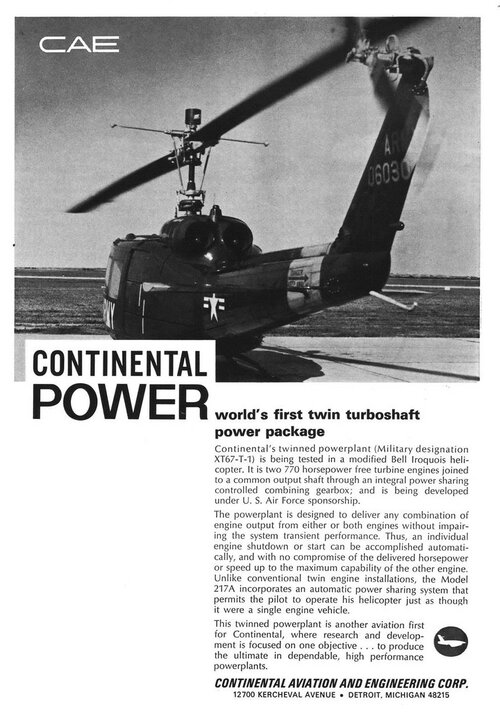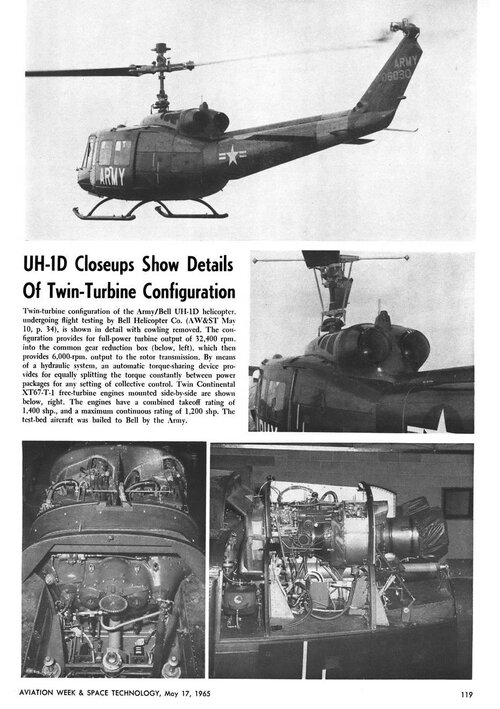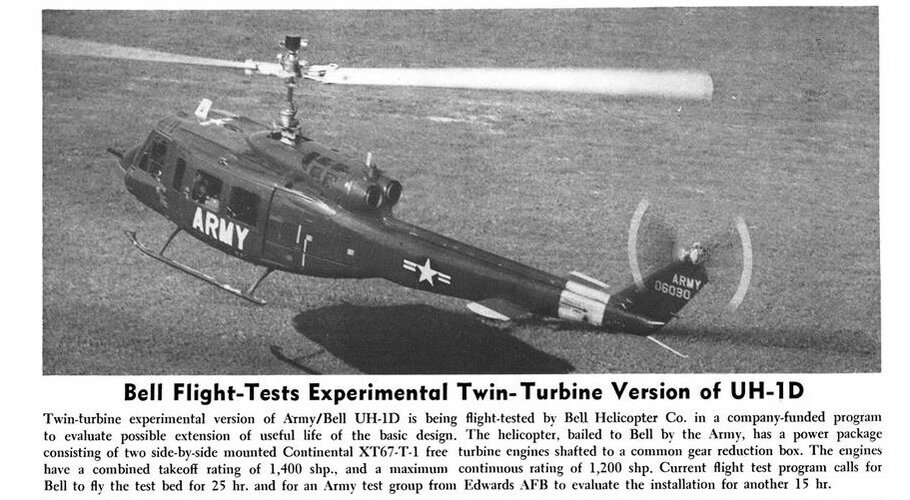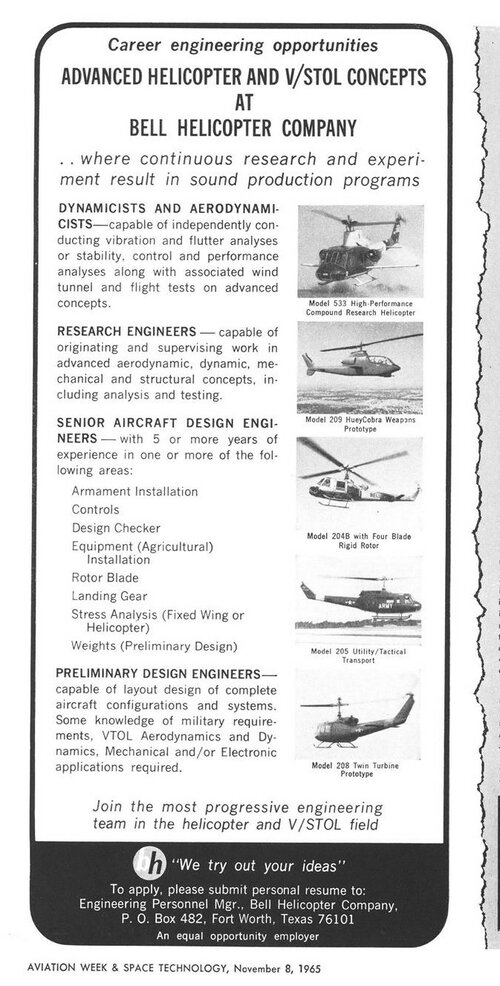Kiltonge
Greetings Earthling
- Joined
- 24 January 2013
- Messages
- 628
- Reaction score
- 1,178
Bell 208 Twin Turbine with Continental XT67
YUH-1D 60-06030 cn 703 was bailed back to Bell, it's now preserved at Fort Rucker with the original T53 re-installed.
DTIC Report AD845032 " ENGINEERING TEST OF UH-1D HELICOPTER WITH XT67 POWER PLANT INSTALLED":
Some notes:
1. Hover performance was improved in all conditions where the T53 version was not torque-limited
2. OEI climb rate at 7000lb weight was 820ft per minute, ceiling 15,000ft
3. Standard range remained basically unchanged due to higher cruise speeds
4. Range could be increased by 30% by shutting-down one engine and accepting a cruise reduction of 15 to 35 kts.
5. Torque-limit SHP could be maintained to 6,600ft on a standard day, meaning that high-altitude climb was improved
6. Transient response of the engines was slow, though this had not been optimised
"On a 35-degree-C day the 2-foot hover celling at 9500 pounds gross weight was 1080 feet pressure altitude with the XT67 power plant and 300 feet pressure altitude with the T53-L-11 engine."
YUH-1D 60-06030 cn 703 was bailed back to Bell, it's now preserved at Fort Rucker with the original T53 re-installed.
DTIC Report AD845032 " ENGINEERING TEST OF UH-1D HELICOPTER WITH XT67 POWER PLANT INSTALLED":
Some notes:
1. Hover performance was improved in all conditions where the T53 version was not torque-limited
2. OEI climb rate at 7000lb weight was 820ft per minute, ceiling 15,000ft
3. Standard range remained basically unchanged due to higher cruise speeds
4. Range could be increased by 30% by shutting-down one engine and accepting a cruise reduction of 15 to 35 kts.
5. Torque-limit SHP could be maintained to 6,600ft on a standard day, meaning that high-altitude climb was improved
6. Transient response of the engines was slow, though this had not been optimised
"On a 35-degree-C day the 2-foot hover celling at 9500 pounds gross weight was 1080 feet pressure altitude with the XT67 power plant and 300 feet pressure altitude with the T53-L-11 engine."
Attachments
Last edited:






